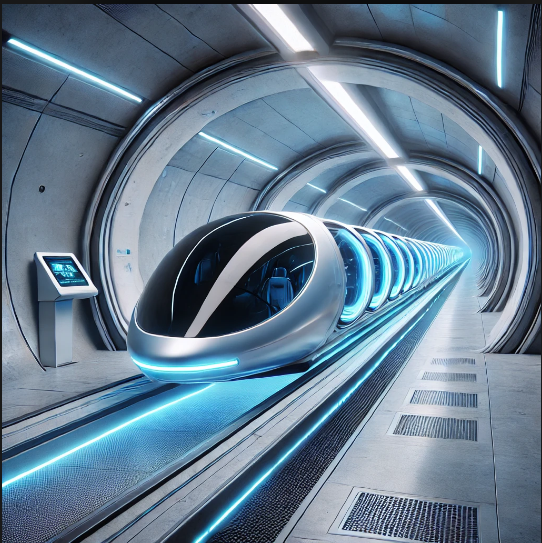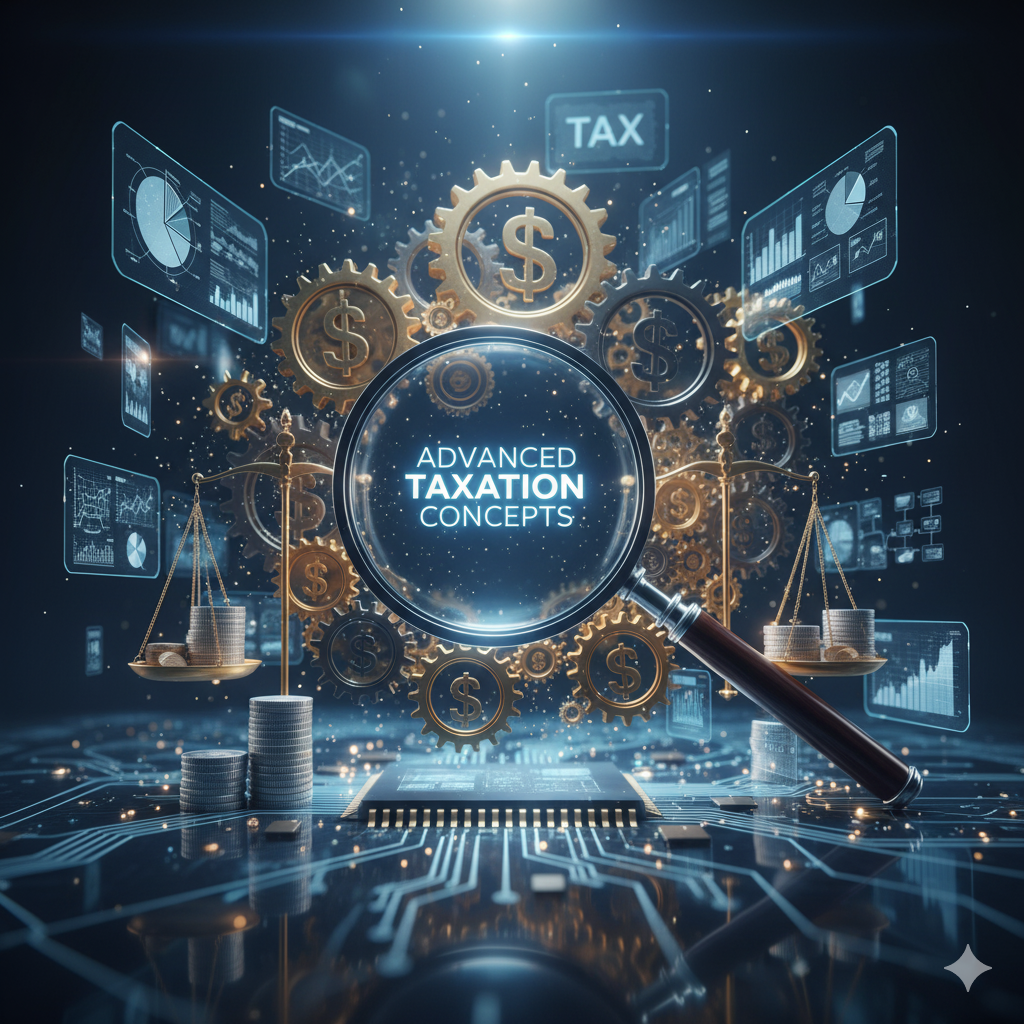Introduction
In the modern era, transportation is undergoing revolutionary changes, with Hyperloop and high-speed rail (HSR) emerging as cutting-edge innovations. These technologies aim to redefine mobility by offering faster, safer, and more efficient modes of transportation. While high-speed rail has been operational in many countries for decades, Hyperloop is a newer concept that promises even greater speeds and energy efficiency. This article explores the advancements in both Hyperloop and high-speed rail, comparing their technologies, benefits, challenges, and future prospects.
What is High-Speed Rail (HSR)?
High-speed rail (HSR) refers to railway systems designed to operate significantly faster than traditional trains, typically at speeds exceeding 250 km/h (155 mph). These trains run on specialized tracks, use advanced signaling systems, and offer a smoother, more efficient ride than conventional rail.
Historical Background
The concept of high-speed rail originated in Japan with the introduction of the Shinkansen (Bullet Train) in 1964. The success of the Shinkansen inspired other countries, such as France, Germany, China, and Spain, to develop their own high-speed rail networks.
Technology Behind High-Speed Rail
HSR uses advanced railway infrastructure and propulsion systems to achieve high speeds. Key technological features include:
- Dedicated Tracks: Unlike traditional railways, HSR requires specially designed tracks with minimal curves to allow high-speed travel.
- Aerodynamic Design: High-speed trains have sleek, aerodynamic designs to reduce air resistance.
- Electric Propulsion: Most HSR systems use electric power, reducing carbon emissions compared to fossil fuel-powered transportation.
- Advanced Signaling Systems: These ensure real-time communication between trains and control centers, improving safety and efficiency.
Global Adoption of High-Speed Rail
HSR has seen extensive adoption worldwide, with notable examples including:
- Japan’s Shinkansen (operating at speeds up to 320 km/h)
- France’s TGV (Train à Grande Vitesse, reaching speeds up to 320 km/h)
- China’s CRH (China Railway High-speed) (boasting speeds up to 350 km/h)
- Spain’s AVE (Alta Velocidad Española)
- Germany’s ICE (Intercity-Express)
China currently holds the world’s largest HSR network, covering over 42,000 km. The country continues to innovate, recently testing maglev (magnetic levitation) trains that can exceed 600 km/h.
What is Hyperloop?
Hyperloop is a proposed mode of transportation that combines magnetic levitation and vacuum tube technology to transport passengers or cargo at ultra-high speeds. The concept was popularized by Elon Musk in 2013, although similar ideas had been explored earlier.
How Hyperloop Works
Hyperloop operates using the following key principles:
- Vacuum Tubes: The system features sealed tubes with very low air pressure to minimize air resistance.
- Magnetic Levitation (Maglev): Hyperloop pods levitate above the track using powerful electromagnets, reducing friction.
- Linear Induction Motors: These motors provide propulsion, allowing the pod to accelerate and decelerate smoothly.
- High-Speed Capsules: Passengers sit inside aerodynamic pods, which move through the tube at speeds exceeding 1,000 km/h.
Potential Speeds and Efficiency
- Hyperloop has the potential to reach speeds of 1,200 km/h (745 mph), significantly faster than high-speed rail and commercial airplanes.
- Energy consumption is lower due to reduced friction and air resistance.
- It can operate on renewable energy sources like solar and wind power, making it more sustainable.
Current Hyperloop Projects
Several companies and countries are working on developing Hyperloop technology, including:
- Virgin Hyperloop (previously Hyperloop One) – Conducted successful passenger tests.
- Elon Musk’s The Boring Company – Working on underground Hyperloop tunnels.
- TransPod (Canada) – Developing a commercial Hyperloop system.
- Hyperloop TT (Hyperloop Transportation Technologies) – Collaborating with various governments.
Countries like the US, India, UAE, and China are actively exploring Hyperloop projects.
Comparison: High-Speed Rail vs. Hyperloop
| Feature | High-Speed Rail | Hyperloop |
|---|---|---|
| Speed | 250-350 km/h | 1,000-1,200 km/h |
| Technology | Electric trains, steel tracks | Maglev pods in vacuum tubes |
| Energy Efficiency | High, but still faces air resistance | Extremely high due to reduced friction |
| Infrastructure Cost | Expensive due to extensive land acquisition | Higher due to specialized vacuum tube construction |
| Passenger Comfort | Comfortable with spacious seating | Unknown; concerns over g-forces and motion sickness |
| Safety Concerns | Well-tested, with advanced safety systems | Experimental; potential risks from vacuum breaches |
| Operational Readiness | Already in use worldwide | Still in prototype stage |
Advantages & Challenges of High-Speed Rail
Advantages
- Proven Technology – HSR is a well-established mode of transportation.
- Eco-Friendly – Uses electricity, reducing dependence on fossil fuels.
- High Passenger Capacity – Can accommodate thousands of passengers per train.
- Convenience – Connects major cities quickly and efficiently.
Challenges
- High Infrastructure Costs – Land acquisition and construction are expensive.
- Environmental Impact – Disrupts natural habitats and requires large-scale engineering.
- Maintenance Costs – Tracks and trains require regular upkeep.
Advantages & Challenges of Hyperloop
Advantages
- Unmatched Speed – Faster than airplanes for short to mid-range distances.
- Low Energy Consumption – Uses renewable energy and has minimal friction.
- Minimal Land Use – Can be built underground or above existing infrastructure.
Challenges
- Expensive Development – High R&D and infrastructure costs.
- Safety Concerns – New technology with untested long-term reliability.
- Passenger Experience – High speeds may cause discomfort.
- Regulatory Hurdles – Requires new laws and safety guidelines.
Future of High-Speed Rail and Hyperloop
High-Speed Rail Innovations
- Maglev Trains: Countries like Japan and China are developing maglev trains exceeding 600 km/h.
- Automation & AI: Integrating artificial intelligence for improved efficiency.
- Green Energy Integration: Adoption of solar and wind power.
Hyperloop’s Development Prospects
- Commercial Viability: If successful, Hyperloop could revolutionize transportation.
- Testing & Safety Improvements: More tests needed to address safety concerns.
- Global Expansion: Countries like India, the US, and UAE are exploring projects.
Conclusion
Both high-speed rail and Hyperloop represent the future of transportation, offering revolutionary speed, efficiency, and sustainability. While HSR is a proven technology, Hyperloop is still in the experimental phase but holds immense potential. In the coming years, advancements in infrastructure, energy efficiency, and safety will determine which of these technologies becomes the dominant mode of transport for the future.




